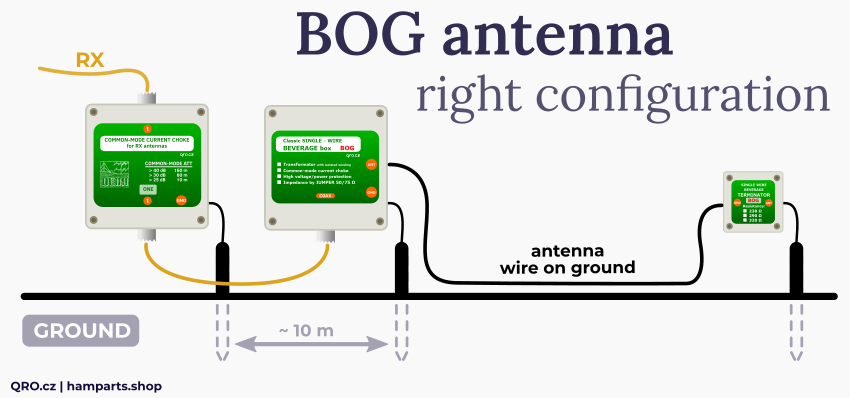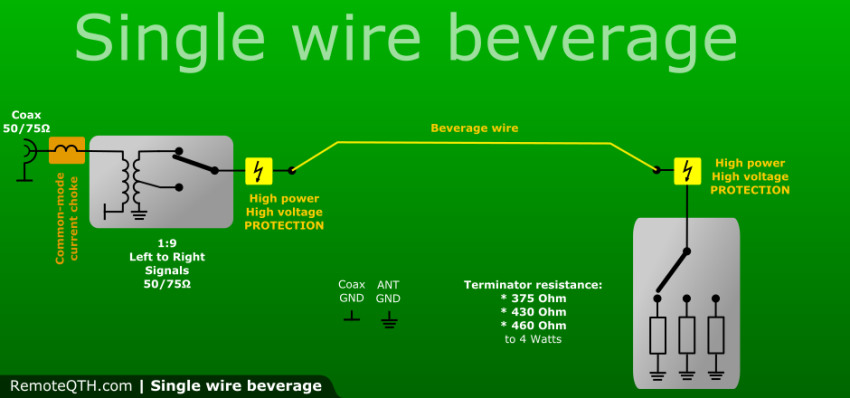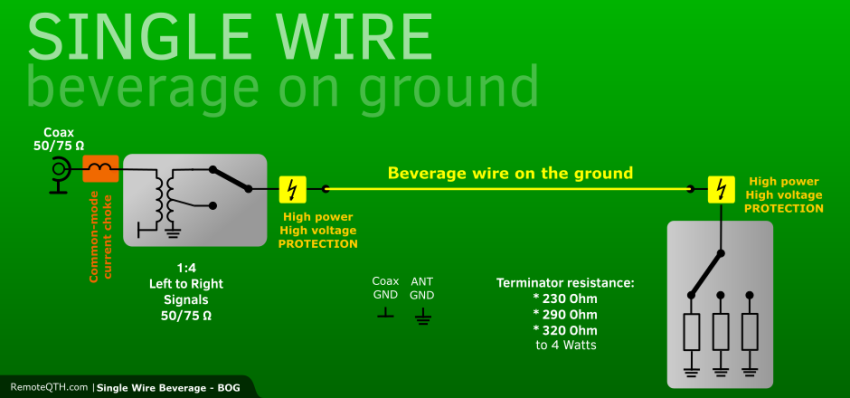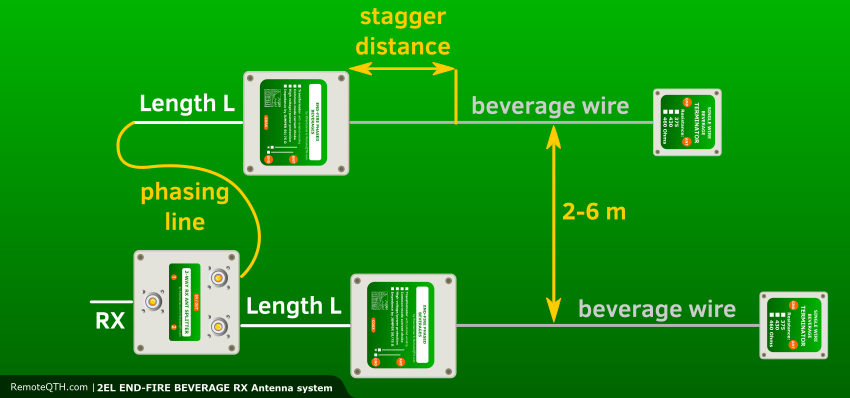RX antenna - BOG vs classic wire beverage
Advantages of BOG antenna
- BOG (Beverage on ground) antenna has much lower output signal than from a comparable classic single wire (elevated) beverage antenna. Usually 10 to 15dB down. This is RX antenna where we counts not for signal strength but SNR (signal-to-noise) ratio. We can use good RX preamplifier to increase the signal strength.
- The impedance of BOG is lower than on classic beverage. This is because of the losses of the ground. It is around 200 to 300 Ohms. We have to use 4:1 impedance transformer (compare to 9:1 for classic beverage).
- What is interesting on BOG is lower velocity factor (50 to 60% vs 95 to 98%). This means that a 80m long BOG has almost the same directivity as a 150m classic beverage. Its directivity is actually better than for the equivalent elevated Beverage, as there is no vertical down lead wire causing omnidirectional signal pick up.
- If you put a BOG on the ground, you or animals will trip over it. The BOG wire must be insulated. It is advisable to use Teflon or similar high quality insulating material that can withstand abrasion (critters have sharp teeth!). Teflon insulated wire is best, but expensive
- In a BOG situation the pick up on the outer screen of the feed line coax is as important as the pick up by the BOG antenna wire. This means that extra common-mode decoupling is mandatory.
- It is highly recommended to install common-mode choke in the feed line with a ground stake approximately 10 meters from the antenna feed point.
(source ON4UN LBDX)

Some external links:
- BOG modelling with Eznec 5 and AutoEZ by IV3PRK Pierluigi "Luis" Mansutti
- Trends in Beverage and BOG Performance by Carl Luetzelschwab K9LA
- BOG RX Antenne, Mythos oder Gold? by Mark PA5MW
Classic (elevated) single wire beverage:

BOG - Beverage (wire) On Ground:




